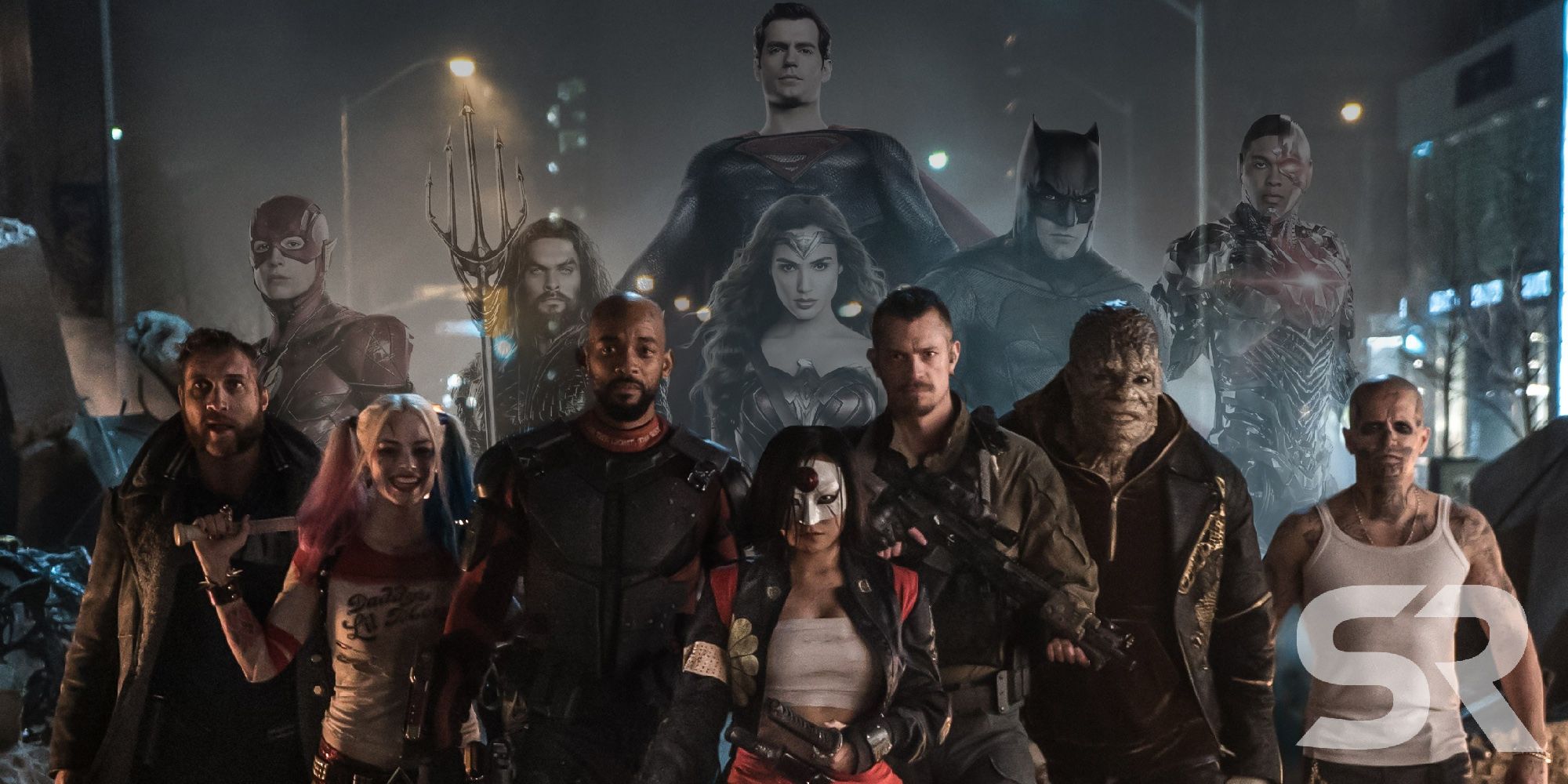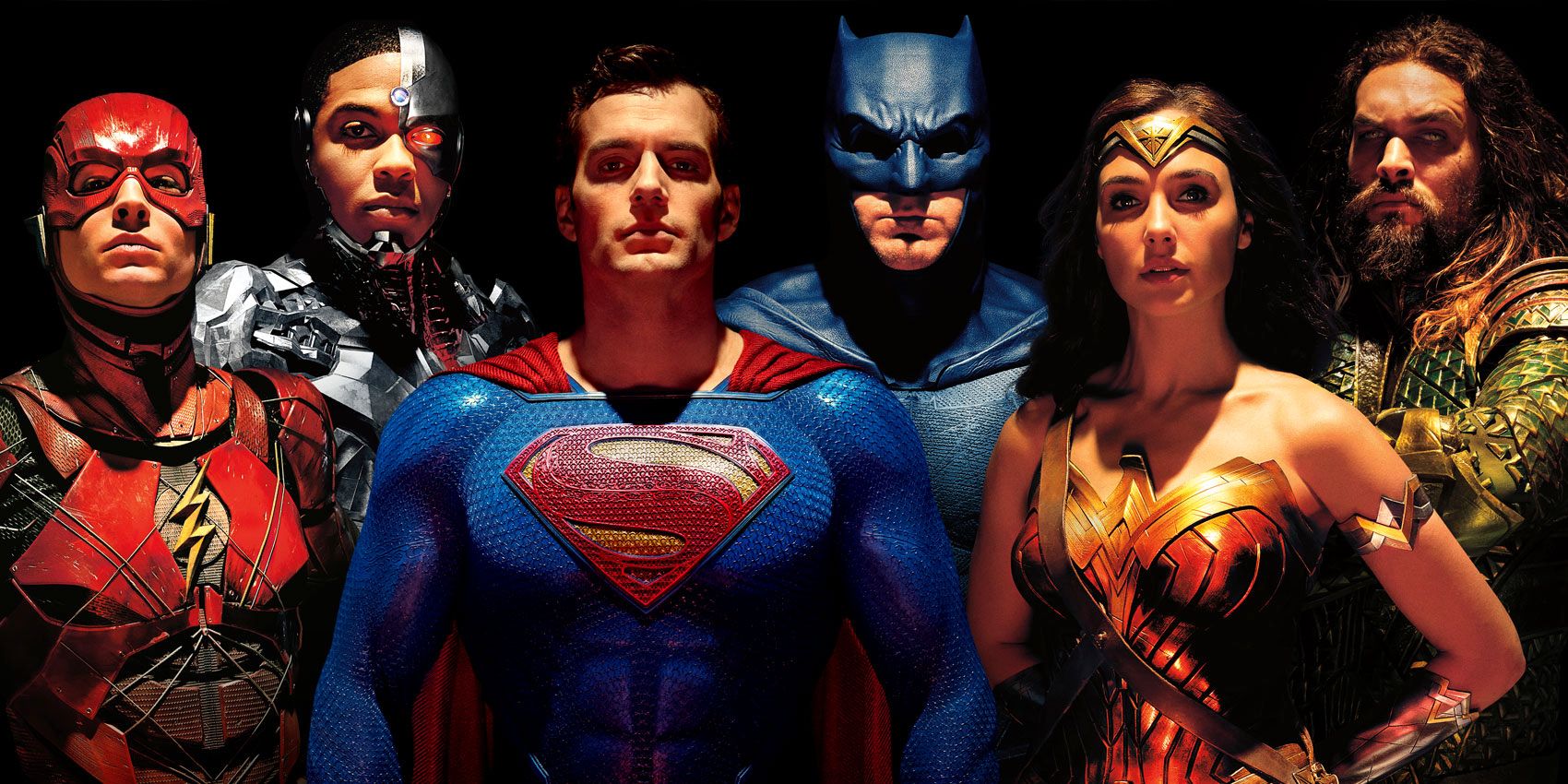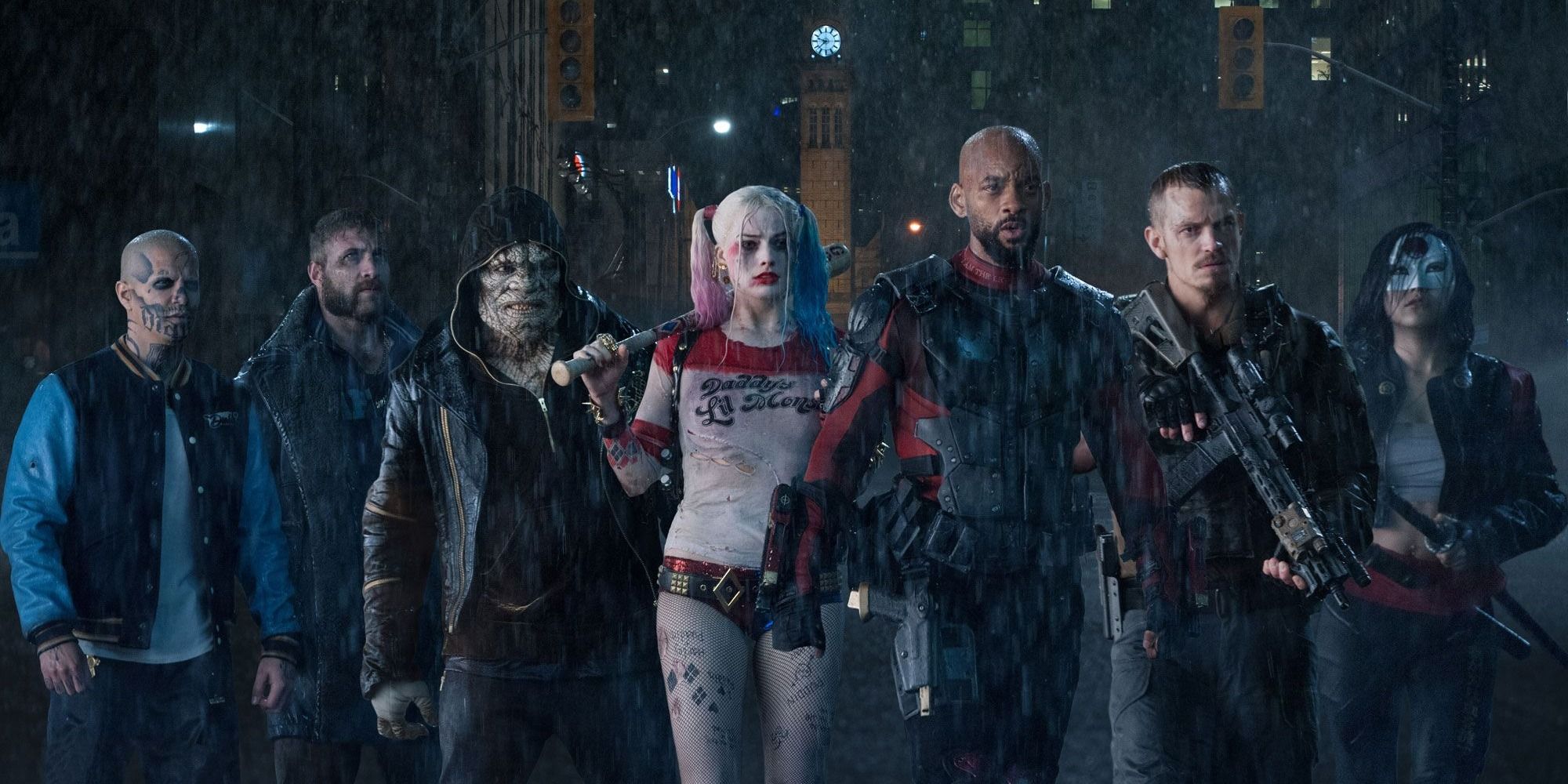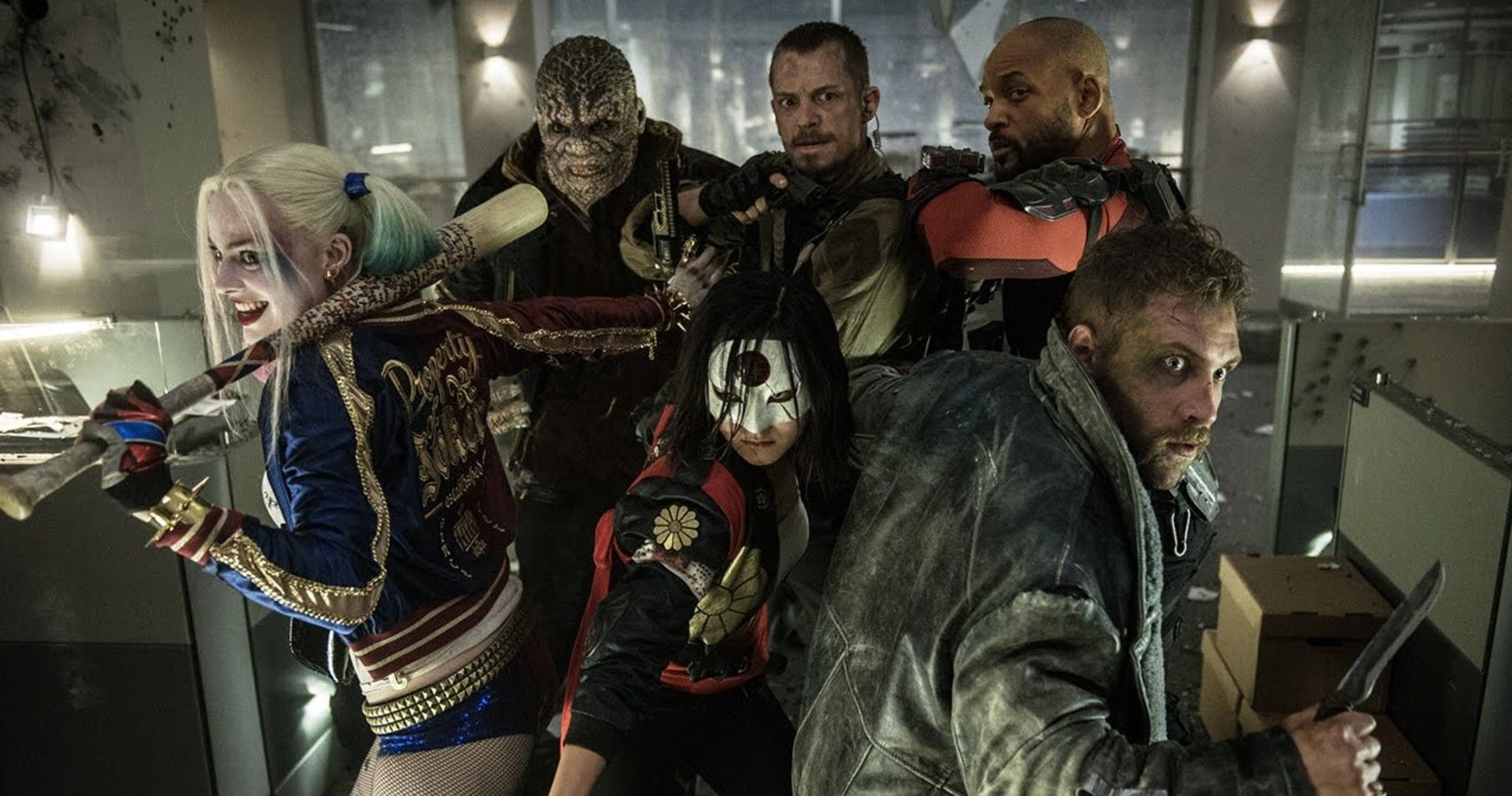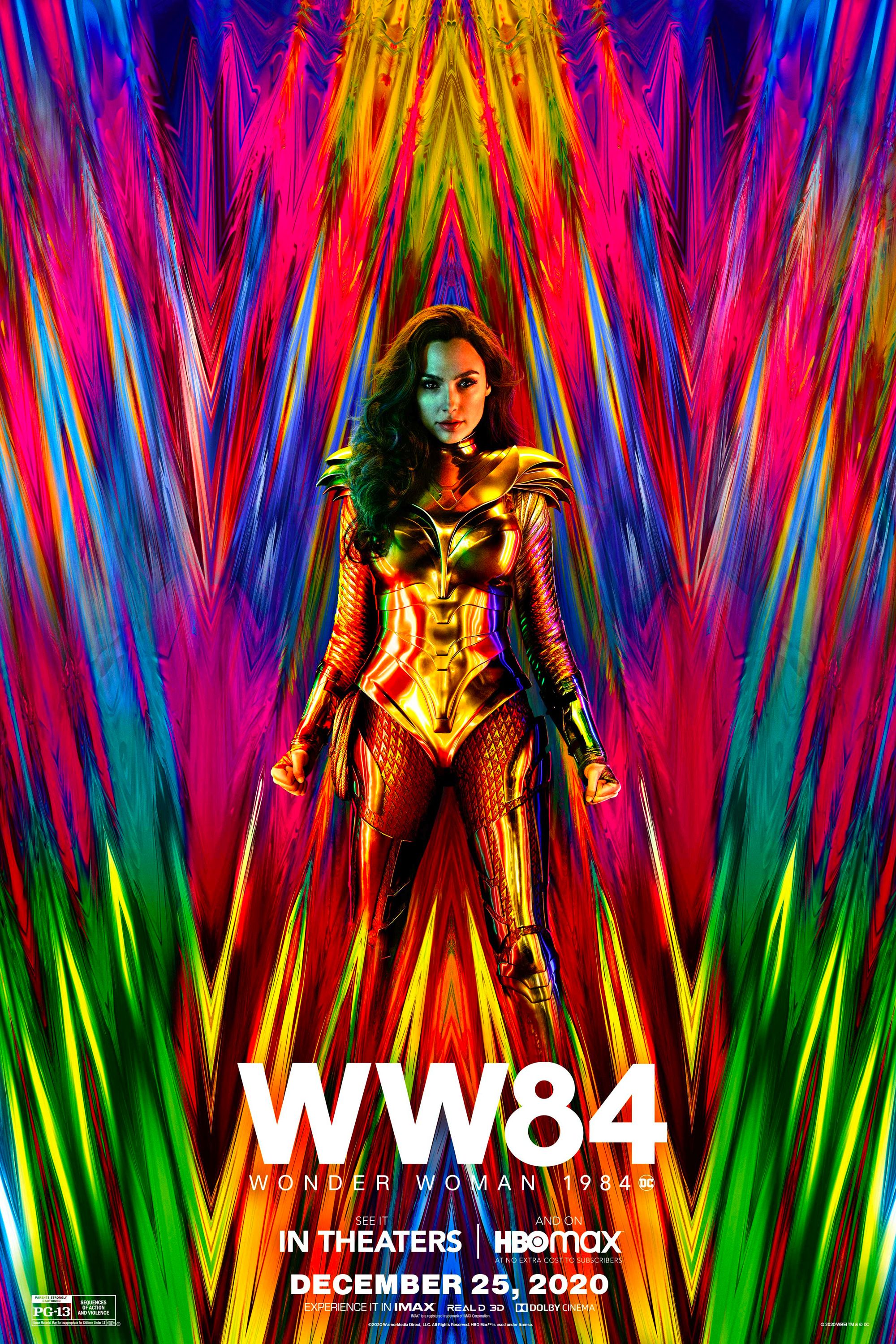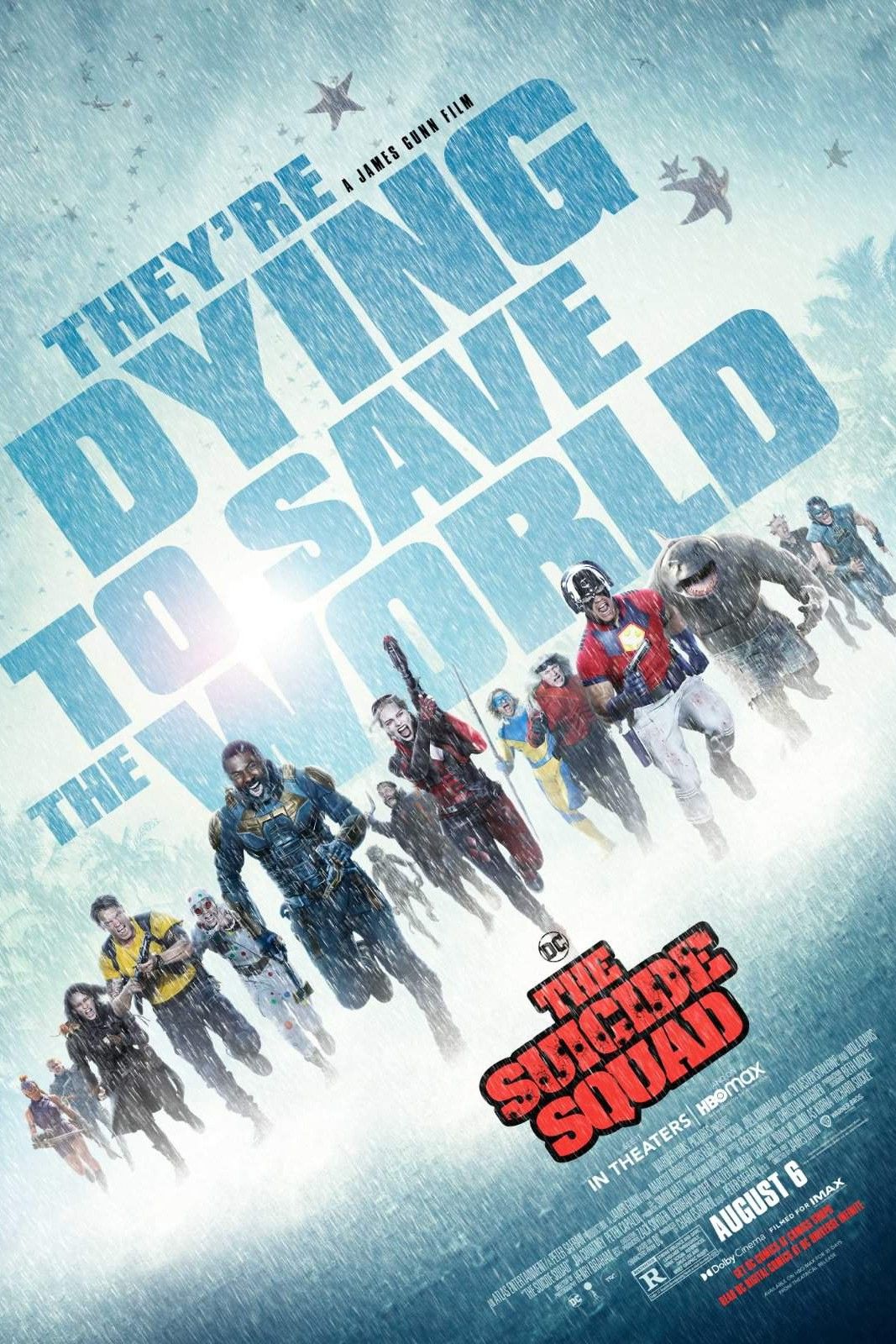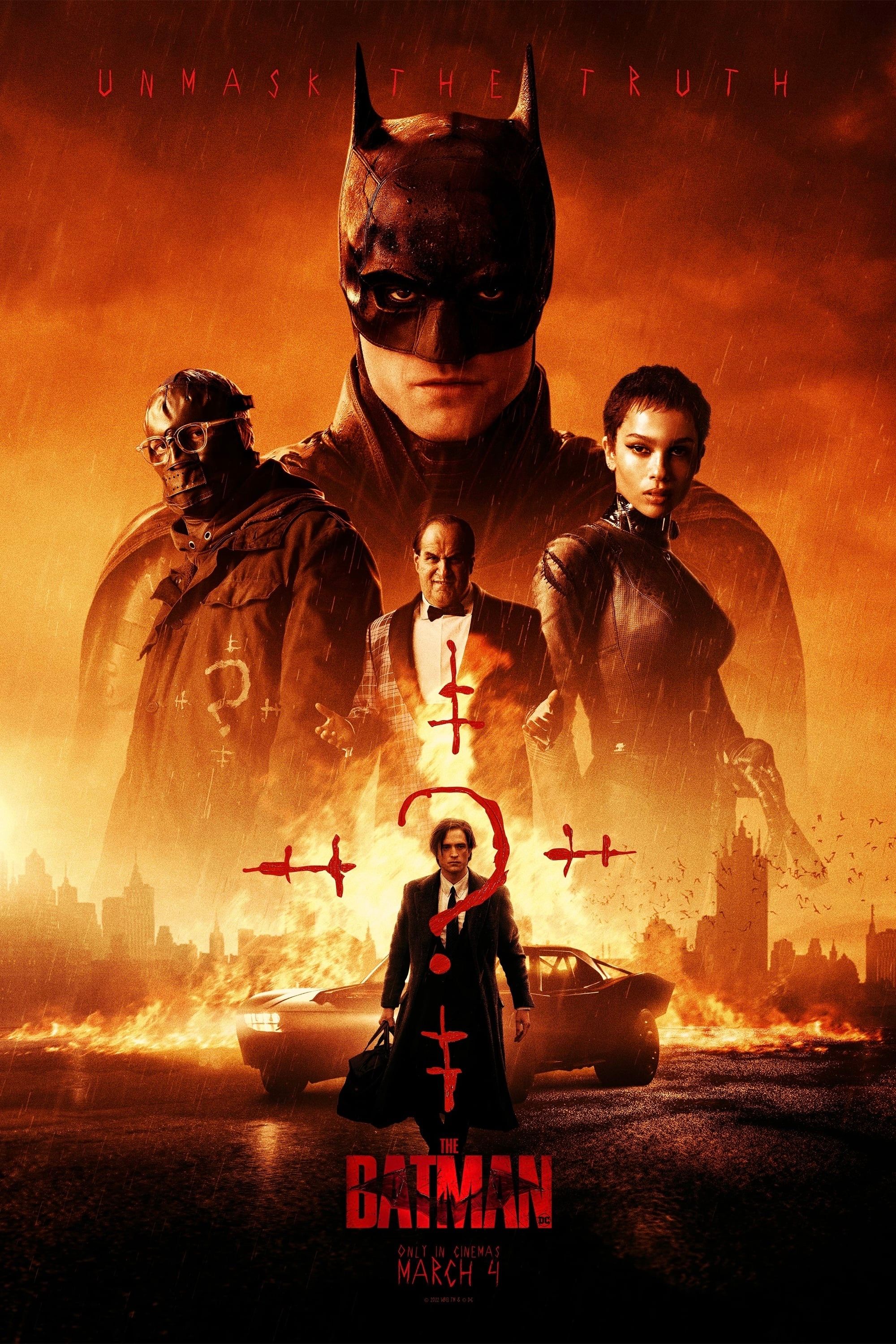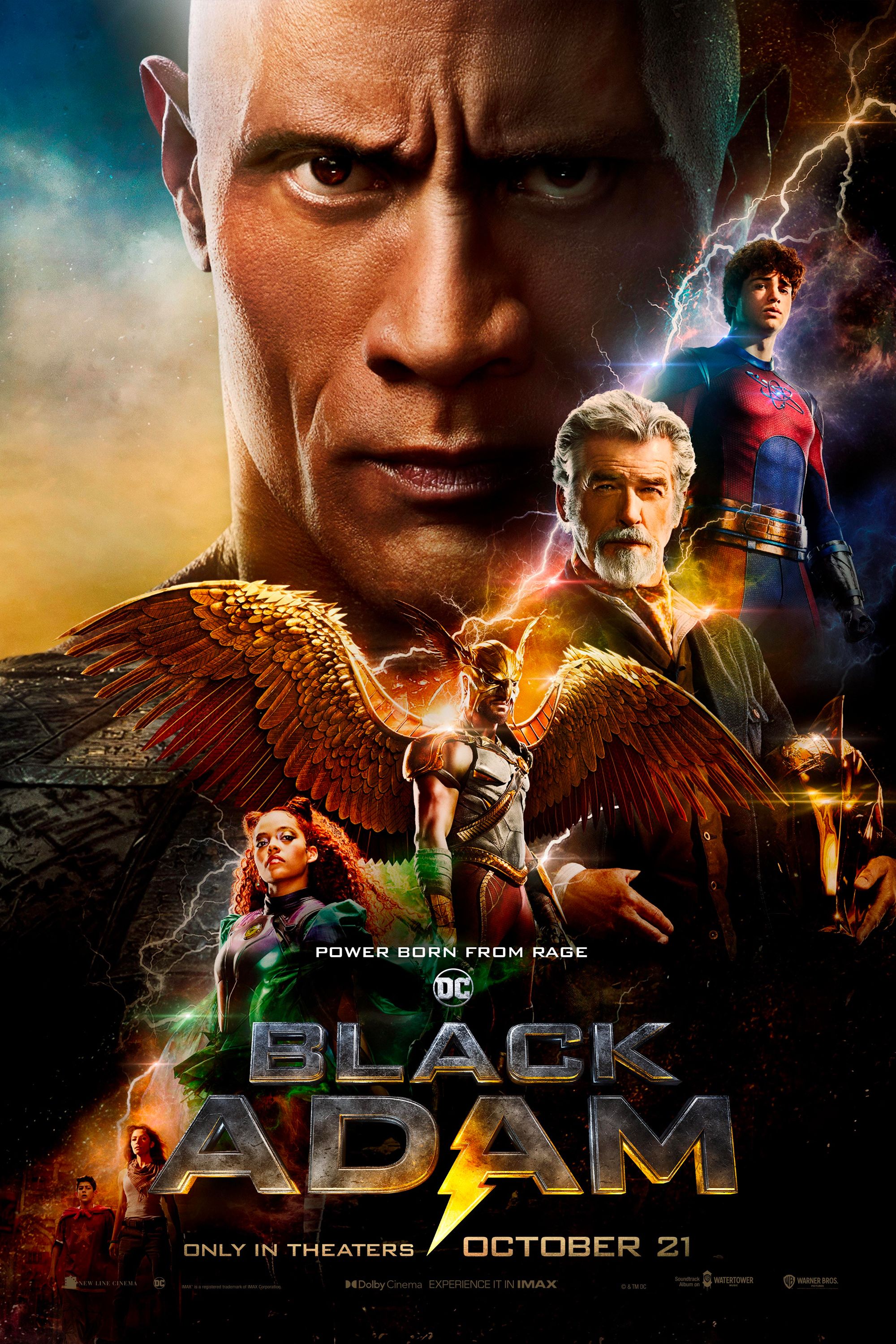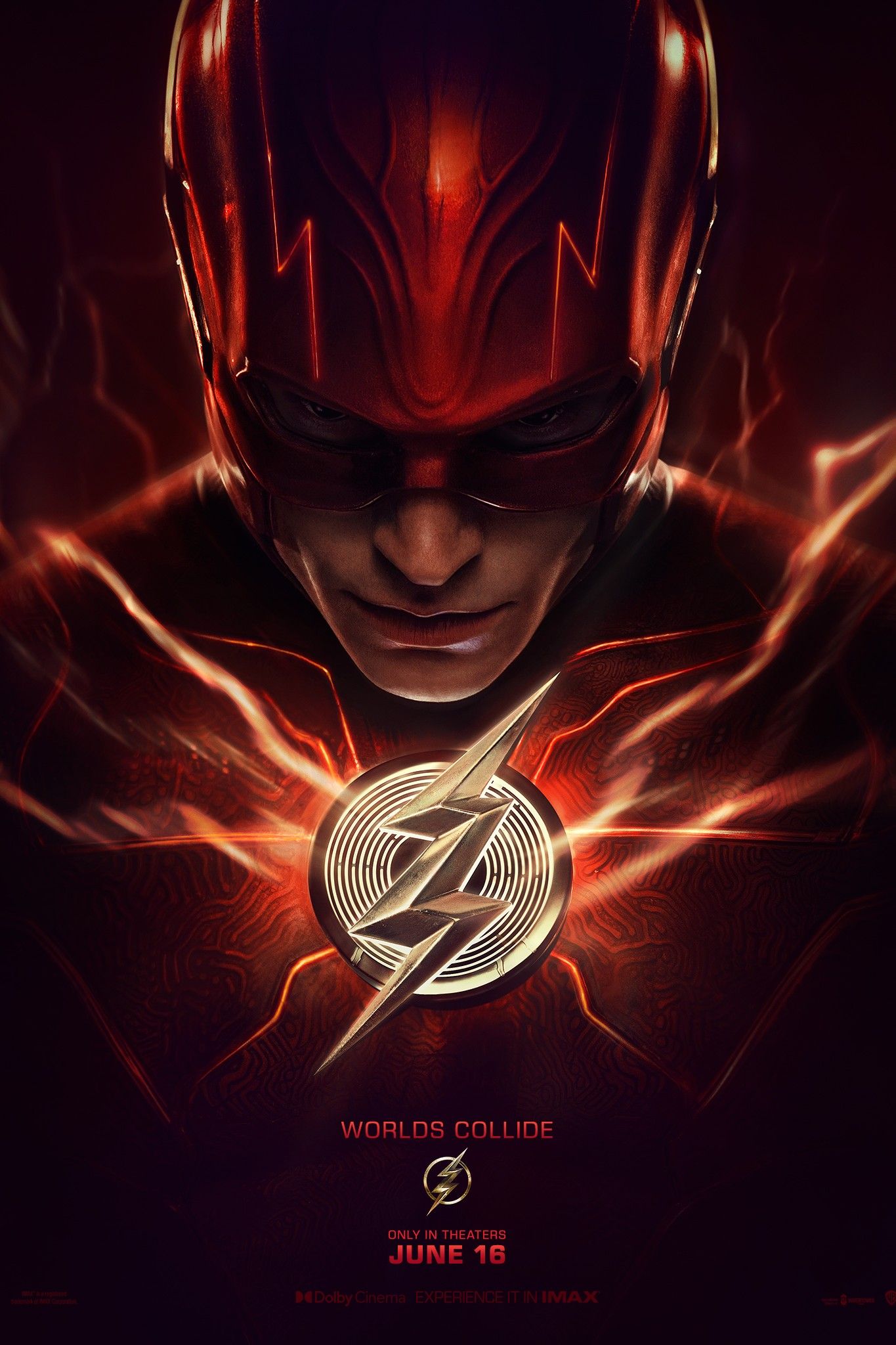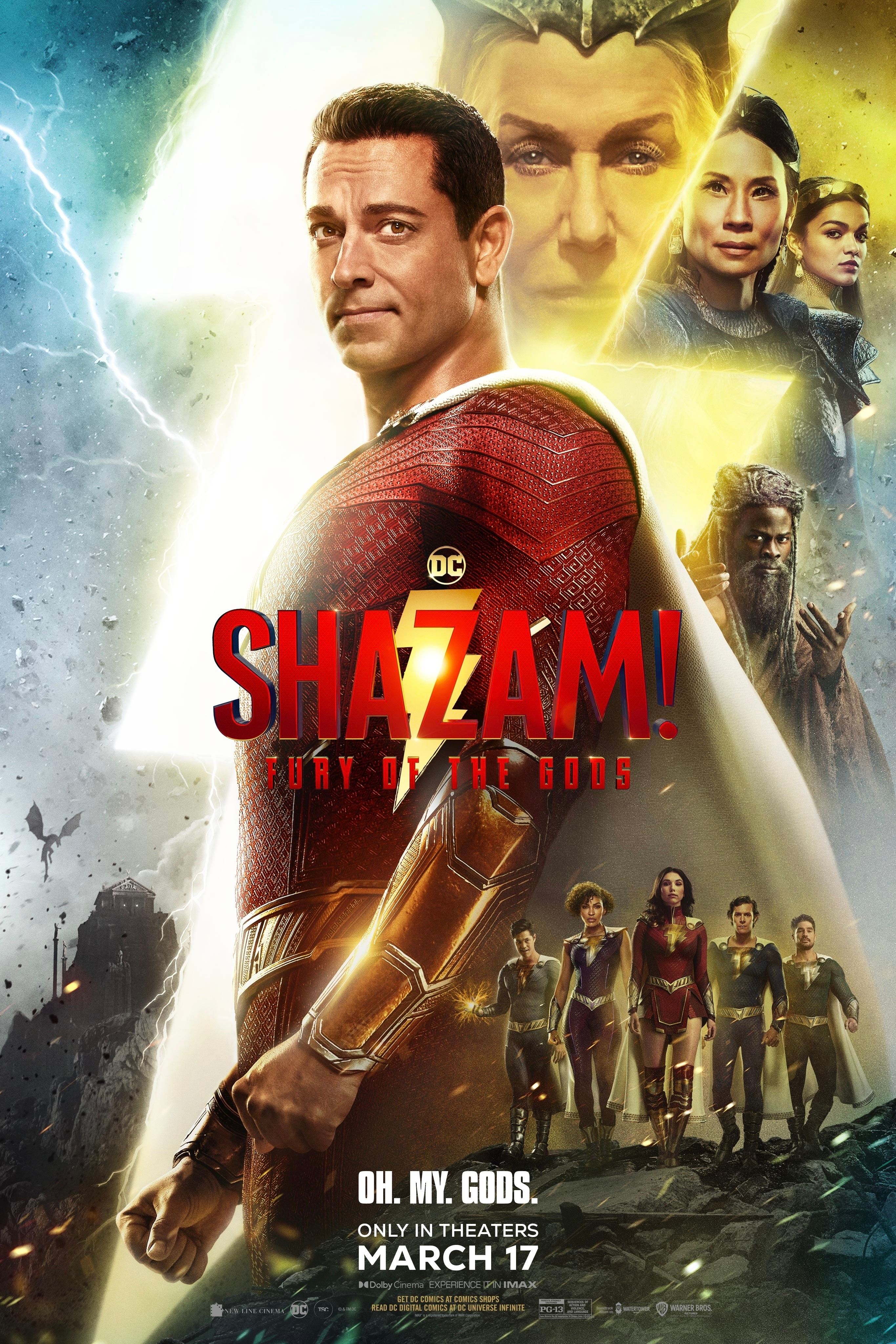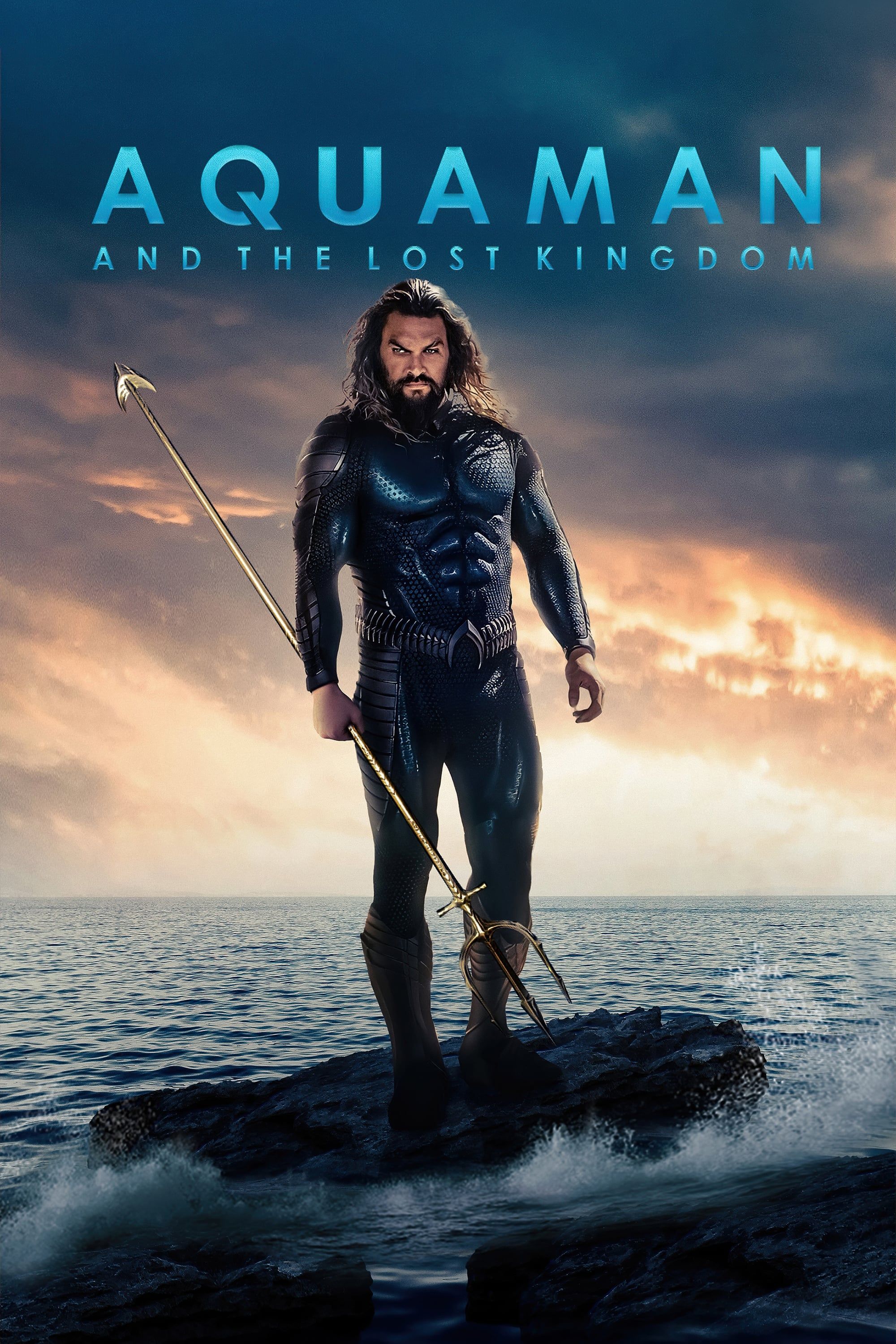Despite receiving considerable backlash from critics and audiences alike, Suicide Squad is actually a better team-up movie than the more warmly received Justice League. With DC FanDome offering fresh details about both the Justice League Snyder Cut and the James Gunn-directed The Suicide Squad, the internet is buzzing with excitement and discussion about both movies. While the Snyder Cut promises Justice League fans a new four-hour cut of the film, The Suicide Squad is serving as a sequel-slash-reboot of the original 2016 film.
Justice League, initially released in 2017, was directed by Zack Snyder. When Snyder had to step away from the project for family reasons, Joss Whedon stepped into the role in his stead, and is credited as a co-director. The film centers around six DC heroes: Batman, Wonder Woman, Aquaman, Cyborg, The Flash, and Superman. They team up to fight Steppenwolf, who seeks to destroy the earth and recreate it in the image of his homeworld, a fiery hellscape aptly named Apokolips. To do so, he must obtain three Mother Boxes which, once brought together, will create "The Unity," granting him the power to carry out his mission. With the recent death of Superman, the Mother Boxes have reawakened to summon Steppenwolf so that he can take advantage of Earth’s weakened state. After resurrecting Superman (and fighting him until he calms down), the Justice League takes on Steppenwolf and eventually saves the world.
2016's Suicide Squad was directed by David Ayer and follows Task Force X, a group of extremely dangerous metahuman criminals sent to deal with Earth’s most dangerous threats in exchange for time off their prison sentences. Created by government operative Amanda Waller, the team consists of Harley Quinn, Deadshot, El Diablo, Captain Boomerang, Killer Croc, and Slipknot. When would-be Task Force X member Enchantress escapes, the rest of the team is led under false pretenses by Colonel Rick Flag to clean up Waller’s mess. Eventually, the team discovers their true mission and defeats Enchantress and her brother Incubus, saving the world despite their bad guy identities. Though Suicide Squad has lower ratings on sites like Rotten Tomatoes or Metacritic and tends to be less favored by fans, it’s still a better team-up movie than Justice League. Here's why.
Justice League Has Too Much Ground To Cover
A major problem with Justice League is that it essentially follows six protagonists, each with a different situation with regards to their origin story. Superman and Wonder Woman each had their own origin story films: Zack Snyder’s Man of Steel in 2013 and Patty Jenkins’ Wonder Woman in 2017. Superman returned in Snyder’s 2016 film Batman v Superman: Dawn of Justice, which served as Batman’s origin story in the DCEU. With these three major players already established, Justice League still had to introduce three more characters: Aquaman, The Flash, and Cyborg. This is where things get tricky.
Justice League covers a huge amount of ground, including a significant amount of setup between Batman and Wonder Woman as they come to understand the threat posed by the film’s villain, Steppenwolf. As Batman and Wonder Woman recruit the others, the film is tasked with briefly but effectively introducing three more legendary characters. The Flash briefly appeared in Batman v Superman (and has a cameo in Suicide Squad), but Justice League has to introduce him in earnest, and it does so quite successfully. The film gives The Flash a quick but heartfelt backstory, but it unfortunately struggles to do the same with Aquaman and Cyborg.
Aquaman’s first appearance is fairly limited and establishes his circumstances and personality quite well. However, when he visits Atlantis after Steppenwolf’s theft of the Atlantean Mother Box, an argument between himself and Mera serves as an awkward bit of exposition that touches upon his wider origins, but feels largely unfinished. A year later, Aquaman’s solo film went on to flesh out his character and backstory in a way that didn’t feel nearly as rushed, but Justice League suffered for not having that character's background already established.
Related: Justice League: The Snyder Cut Was NOT Zack Snyder's Theatrical Cut
With Justice League’s relatively short (for a comic book movie) 2 hour running time, it’s understandable that this issue comes up, but it still creates significant problems with character development. Cyborg suffers similarly from these time constraints, and though the basics of his origin story are established, his growth often feels abrupt and disjointed. With not enough time to equally feature each of the six leads, the film feels a bit stunted and even jumpy. The group doesn’t unite until well into the runtime, and the film often feels as though its focus is in too many places at once.
Suicide Squad's Character Intros Are Brief But Effective
Suicide Squad doesn’t have the same problem, which it owes largely to the fact that it doesn’t take itself too seriously as a film: a stark contrast to previous DCEU entries, including Justice League. Because it features some of DC’s zanier characters, Suicide Squad is more free to lean into a tongue-in-cheek, even ironic tone. It introduces its characters in a way that is obviously expository, but much cleaner than Justice League, whose exposition often feels far-flung and overly complicated. After some initial establishing glimpses at the film’s emotional anchors, Harley Quinn and Deadshot, the audience essentially sits in on a pitch meeting, helmed by project leader Amanda Waller, on what Task Force X is and why it’s important. It’s a tough sell to government higher-ups and an unconventional movie premise, so the directness is actually quite helpful in laying out how and why the team-up works.
Each character is introduced in different levels of detail based largely on how much screen time they have, and while the balance is clearly skewed, it informs the audience’s understanding of each character to the exact right amount of detail. For example, Slipknot is only barely introduced, so viewers don’t have much time to get attached to him before his head is blown off to establish that, yes, Waller and Rick Flag really will kill any member of the team who steps out of line. It’s an incredibly abrupt moment that is treated with the same black humor that informs the rest of the film: while there are some serious moments, Suicide Squad is mostly a romp. It’s meant to be fun, irreverent, and a little bit dark.
Task Force X Is Better At Teamwork Than The Justice League
Both Justice League and Suicide Squad flip conventional expectations, but it works out to the detriment of the former and the success of the latter. While it’s important to the action of Justice League that the superhero group experiences a fair amount of internal discord, the film suffers for it. Each superhero approaches the conflict with a very individualistic view, each having their own ideas about responsibility, their own sense of how things should be done, and their own convictions about whether survival is possible at all. The film, to its credit, manages to acknowledge the validity of each person’s perspective, but it comes at the cost of a sense of cohesion. The Justice League really only becomes a functional team at the end of the film, despite the fact that superheroes are supposed to be better suited to work in groups.
Ironically, the characters in Suicide Squad form a successful team quite quickly. Being brought together against their own will seems like a situation that would breed a great deal of animosity between team members, but it is actually what unites Task Force X the most strongly. All of them - even good guys Rick and Katana - are abused by the system, and it is that shared suffering that motivates them to work together even when their lives are no longer at stake. Admittedly, Task Force X initially works together because they have to if they want to survive; but while their self-interest and desire to live gets the ball rolling, they eventually form genuine bonds, leading El Diablo to refer to the group as his family.
All this isn’t to say that the characters of Justice League don’t similarly form strong emotional ties - they do. But Suicide Squad dedicates more time to character growth, especially in the context of the group, which makes the film feel more whole and unified throughout.
-
Both Justice League and Suicide Squad have been criticized for their respective failings, but overall both films have individual strengths. If it’s a question of which is a better movie, fans and critics seem to agree that the answer is Justice League, even if the margin, in some cases, is small. But when considering which movie is the better team-up, Suicide Squad comes out on top. For all its flaws (Jared Leto’s Joker included), the film has a definitive aesthetic and tone, which is probably exactly why it’s so divisive. People seem to either love or hate Suicide Squad.
Conversely, Justice League has something for everyone. The heroes are far more diverse in terms of their personalities, and much more grounded in reality than anyone in Task Force X. The film lacks a consistent tone, but in that way it becomes more appealing to a wide audience. Viewers can choose to brush off the humor if it feels misplaced, or they can see it as comedic relief from a tense main storyline. While some fans may find Justice League’s many focuses to be disjointed, others might enjoy the inclusion of all their favorite characters. Neither film is perfect because no film is perfect, but when it comes down to it, Suicide Squad is the DCEU’s better team-up because against all odds, it puts up a more united front.

